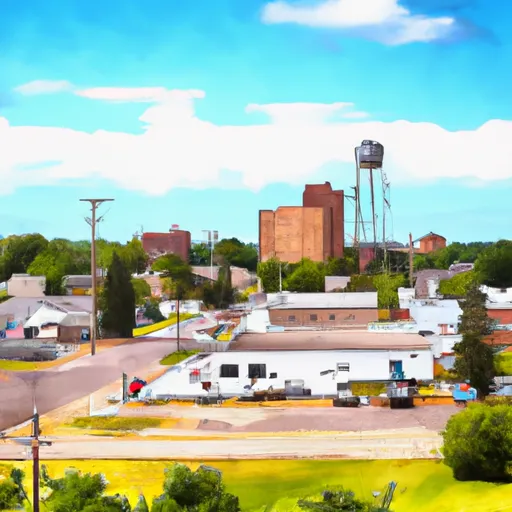-
 Snoflo Premium
Snoflo Premium
Get unlimited access to all our content
With no Ad interruptions! - Start Your Free Trial Login with existing account
Schroeder
Eden Index
Climate
6.3
•
Recreation
5.8
•
Community
•
Safeguard
4.6/10

Schroeder, Minnesota is a small town located on the North Shore of Lake Superior in Cook County. It experiences a humid continental climate, characterized by cold winters and mild summers. The average high temperatures in summer range from the mid-60s to low 70s Fahrenheit, while average lows in winter dip into the single digits, occasionally dropping below zero. The town receives a significant amount of precipitation throughout the year, with snowfall during winter months.
As a coastal town, Schroeder benefits from the hydrology constituents of Lake Superior. The lake's presence provides opportunities for fishing, boating, and other water activities. The Temperance River, located nearby, is a popular spot for hiking and enjoying scenic waterfalls.
Outdoor recreation enthusiasts will find plenty to do in Schroeder. The area offers opportunities for camping, hiking, and birdwatching in nearby national and state parks such as Temperance River State Park and Cascade River State Park. The region's forests and trails also provide opportunities for hunting, snowmobiling, and cross-country skiing during the winter months.
Overall, Schroeder, Minnesota provides a picturesque and diverse natural environment, offering residents and visitors numerous recreational opportunities to enjoy throughout the year.
What is the Eden Index?
The Snoflo Eden Index serves as a comprehensive rating system for regions, evaluating their desirability through a holistic assessment of climate health, outdoor recreation opportunities, and natural disaster risk, acknowledging the profound impact of these factors on livability and well-being.
Climate Health Indicator (CHI): 6.3
Schroeder receives approximately
808mm of rain per year,
with humidity levels near 79%
and air temperatures averaging around
4°C.
Schroeder has a plant hardyness factor of
4, meaning
plants and agriculture in this region thrive during a short period during spring and early summer. Most
plants will die off during the colder winter months.
By considering the ideal temperature range, reliable water supplies, clean air, and stable seasonal rain or snowpacks, the Climate Health Indicator (CHI) underscores the significance of a healthy climate as the foundation for quality living.
A healthy climate is paramount for ensuring a high quality of life and livability in a region, fostering both physical well-being and environmental harmony. This can be characterized by ideal temperatures, reliable access to water supplies, clean air, and consistent seasonal rain or snowpacks.
Weather Forecast
Streamflow Conditions
Northwestern Lake Superior
Area Rivers
Northwestern Lake Superior
Snowpack Depths
Northwestern Lake Superior
Reservoir Storage Capacity
Northwestern Lake Superior
Groundwater Levels
Recreational Opportunity Index (ROI): 5.8
The Recreational Opportunity Index (ROI) recognizes the value of outdoor recreational options, such as parks, hiking trails, camping sites, and fishing spots, while acknowledging that climate plays a pivotal role in ensuring the comfort and consistency of these experiences.
Access to outdoor recreational opportunities, encompassing activities such as parks, hiking, camping, and fishing, is crucial for overall well-being, and the climate plays a pivotal role in enabling and enhancing these experiences, ensuring that individuals can engage in nature-based activities comfortably and consistently.
Camping Areas
| Campground | Campsites | Reservations | Toilets | Showers | Elevation |
|---|---|---|---|---|---|
| Deer Leap | 46 | 338 ft | |||
| Piedmont - Clearwater Lake | None | 570 ft | |||
| Meramec State Park | None | 613 ft | |||
| Klondike County Park | None | 530 ft | |||
| Watercress | 114 | 523 ft | |||
| Robertsville State Park | 27 | 502 ft | |||
| Big Spring - Ozark National Scenic River | 123 | 727 ft | |||
| Berryman | 19 | 1,009 ft | |||
| Cuivre River State Park | 94 | 658 ft | |||
| Float Camp | 16 | 472 ft |
Nearby Ski Areas
Catastrophe Safeguard Index (CSI):
The Catastrophe Safeguard Index (CSI) recognizes that natural disaster risk, encompassing floods, fires, hurricanes, and tornadoes, can drastically affect safety and the overall appeal of an area.
The level of natural disaster risk in a region significantly affects safety and the overall livability, with climate change amplifying these risks by potentially increasing the frequency and intensity of events like floods, fires, hurricanes, and tornadoes, thereby posing substantial challenges to community resilience and well-being.
Community Resilience Indicator (CRI):
The Community Resilience Indicator (CRI) recognizes that education, healthcare, and socioeconomics are crucial to the well-being of a region. The CRI acknowledges the profound impact of these elements on residents' overall quality of life. By evaluating educational resources, healthcare accessibility, and economic inclusivity, the index captures the essential aspects that contribute to a thriving community, fostering resident satisfaction, equity, and social cohesion.

